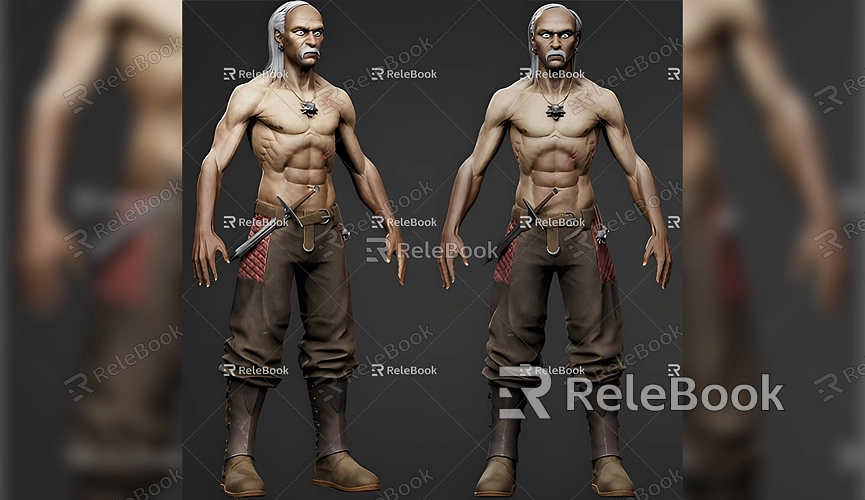Can You Use SketchUp Models for Game Assets?
In the game development process, creating 3D models is a crucial step. Many developers and designers use various tools to build game worlds, and SketchUp is widely appreciated for its ease of use and flexibility. So, can models created in SketchUp be used as game assets? In this article, we will explore this question and share some practical tips and tricks to help you transform SketchUp models into high-quality game assets.
First, let’s understand the characteristics of SketchUp. SketchUp is an intuitive and powerful modeling tool widely used in architecture, interior design, and product design. It offers a rich set of drawing tools that allow users to quickly create complex 3D models. While SketchUp excels in architecture and interior design, using its models in game development presents some challenges.

Game assets typically need to meet specific requirements, such as low polygon counts, optimized textures, and proper UV mapping. In contrast, models generated by SketchUp often have high polygon counts and complex geometries, which may not be suitable for use in real-time rendering game environments. Therefore, optimization is essential when using SketchUp models as game assets.
Before using SketchUp models for game development, the first consideration should be the polygon count. If the model has too many polygons, it can lead to decreased performance during gameplay. You can use SketchUp's “Simplify” feature or external tools like Blender to reduce polygon counts. By eliminating unnecessary details and merging similar faces, you can effectively lower the polygon count while maintaining the model's overall appearance.
Next is texture handling. Game assets typically require small texture sizes to improve load times and reduce memory usage. Materials in SketchUp can sometimes include high-resolution images, which may not be suitable as game textures. It is advisable to use lower-resolution textures and compress image files before exporting the model. By choosing appropriate texture formats, you can ensure good visual quality in the game.
Additionally, UV mapping is an important step in creating game assets. UV mapping is the process of projecting a 3D model's surface onto a 2D texture image. While you can set materials in SketchUp, its UV mapping capabilities are somewhat limited. Therefore, importing the model into more powerful tools like Blender or Maya for UV mapping and detail processing will give you better control over texture effects.
When exporting the model, choosing the right file format is also crucial. Common file formats for game assets include FBX, OBJ, and GLTF. Ensure you select the correct format during export so the model can be smoothly imported and used in the game engine. The FBX format is particularly well-supported by many game engines, making it a solid choice.

After successfully exporting the model, you can import it into a game engine like Unity or Unreal Engine. This is a critical step to ensure the model functions correctly in the game environment. After importing, carefully check the model’s materials, textures, and collision settings to ensure they work properly in the game.
In addition to optimizing the model, using external resources is an effective way to enhance the quality of game assets. If you need high-quality 3D textures and HDRIs while creating models and virtual scenes, you can download them for free from [Relebook](https://textures.relebook.com/). These high-quality textures and environment maps can add more detail and realism to your game assets. Additionally, if you need exquisite 3D models, you can download them from [Relebook](https://3dmodels.relebook.com/), which offers a wealth of quality 3D resources to quickly enrich your game world.
Throughout the process, learning and utilizing various plugins and tools can significantly enhance your workflow efficiency. SketchUp offers numerous plugins to help optimize models and manage texture processing, such as the “CleanUp” plugin, which can eliminate unnecessary faces and components to reduce file size. Tools like Blender, Maya, and 3ds Max provide extensive features for optimization, UV mapping, and animation.
Of course, game development is an ongoing learning process. Participating in design communities, watching online tutorials, and reading related literature can help you continuously improve your skills. Many game developers are eager to share their experiences and tips, which is particularly valuable for beginner designers.
While SketchUp models face some challenges when used directly as game assets, by optimizing polygon counts, handling textures, and performing UV mapping, you can effectively transform them into high-quality game assets. Choosing the right export format and game engine import settings will also ensure the model functions properly in the game. We hope this article provides valuable information to help you navigate your game development journey more smoothly. If you need high-quality 3D textures and HDRIs, you can download them for free from [Relebook](https://textures.relebook.com/). If you're looking for exquisite 3D models, visit [Relebook](https://3dmodels.relebook.com/) for a wide range of premium resources. May you achieve greater success in your game development endeavors!

